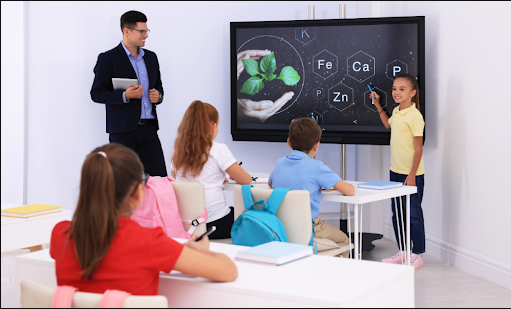
Reimagining Classrooms: How Modern Technology Is Reshaping Education
The 21st-century classroom looks vastly different from its chalk-and-blackboard predecessors. With the rapid pace of technological innovation, education has entered an era of transformation that goes beyond digitizing textbooks or using computers for word processing. Today’s classrooms are dynamic learning environments where modern technology acts not just as a tool but as a catalyst for deeper engagement, personalized instruction, and global connectivity.
The Evolution of Educational Technology
Historically, education was a one-size-fits-all system, with teachers lecturing at the front of a room and students passively receiving information. The introduction of projectors, computers, and later, the internet began a shift toward more interactive and resource-rich classrooms. However, the turning point came in the past decade, particularly catalyzed by the COVID-19 pandemic, which forced educational institutions worldwide to pivot to online platforms.
This urgency revealed both the potential and the challenges of educational technology. While many struggled with access and adaptation, the disruption also sparked a reevaluation of how, where, and why we learn. Schools and universities began to explore blended learning, flipped classrooms, and hybrid models that integrate both physical and digital experiences.
Key Technologies Reshaping the Classroom
- Learning Management Systems (LMS)
Platforms like Google Classroom, Moodle, and Canvas have become integral to organizing digital coursework, tracking student progress, and fostering collaboration. These systems offer centralized access to assignments, resources, grades, and communication channels, streamlining both teaching and learning. - Artificial Intelligence and Adaptive Learning
AI-powered tools can tailor instruction to individual students’ needs. For example, platforms like Khan Academy and DreamBox use adaptive algorithms to provide personalized content based on student performance. These systems can identify gaps in understanding and adjust the difficulty or type of instruction accordingly, making learning more efficient and student-centered. - Virtual and Augmented Reality (VR/AR)
Immersive technologies bring subjects to life in ways that were once impossible. Students can explore the human body in 3D, walk through historical events, or engage in virtual science labs. Tools like Google Expeditions and ClassVR offer field trip experiences from within the classroom, making abstract concepts tangible. - Gamification
Integrating game elements into learning has shown to increase engagement and motivation. Platforms like Kahoot!, Quizizz, and Duolingo use points, levels, and rewards to make learning fun and competitive, which especially appeals to younger learners.
Collaborative Tools and Cloud Computing
Services like Microsoft Teams, Google Workspace, and Zoom enable real-time collaboration among students and teachers, whether they are in the same room or across continents. Cloud storage also ensures that materials are accessible anytime, anywhere, reducing reliance on physical resources.
The Benefits of Technology in Education
1. Personalized Learning:
Technology allows for the customization of educational experiences. Students no longer have to conform to the pace of an entire class. Whether a learner needs remediation or acceleration, digital platforms can accommodate individual learning paths, increasing student success rates and confidence.
2. Greater Engagement:
Interactive apps, multimedia content, and virtual simulations cater to different learning styles—visual, auditory, and kinesthetic. This diversity of content delivery keeps students more engaged and helps improve retention.
3. Improved Accessibility:
For students with disabilities, technology has been a game changer. Text-to-speech software, screen readers, closed captions, and alternative input devices ensure that education is inclusive and accessible to all learners.
4. Global Learning Opportunities:
The internet connects students to a vast array of global resources and peers. Language exchanges, collaborative international projects, and access to world-class lectures create a more interconnected and enriched learning experience.
5. Efficient Assessment and Feedback:
Digital tools allow educators to monitor student progress in real time. Quizzes can be auto-graded, and dashboards provide instant analytics on performance trends, helping teachers intervene early when students are struggling.
Challenges and Considerations
While the benefits are significant, integrating technology into education is not without its challenges.
1. Digital Divide:
Not all students have equal access to devices and internet connectivity. This disparity can widen existing educational gaps unless addressed through public policy and school-level initiatives.
2. Teacher Training and Support:
Technology is only as effective as the educators who use it. Teachers need ongoing professional development to integrate tech meaningfully into their pedagogy rather than using it as a gimmick.
3. Data Privacy and Security:
With increased online activity comes the responsibility to protect student data. Schools must adhere to strict cybersecurity protocols and educate students on digital citizenship.
4. Screen Time Concerns:
While digital tools are beneficial, excessive screen time can negatively impact attention spans, physical health, and social development. A balanced approach is essential.
Looking Ahead: The Future of the Classroom
As we move deeper into the digital age, the classroom will continue to evolve. The future likely includes greater integration of AI tutors, more immersive VR experiences, and even the use of blockchain for secure credentialing. However, the core of education will remain human connection and critical thinking.
Technological tools should support—not replace—the roles of teachers. Emotional intelligence, mentorship, and real-world problem-solving are areas where human educators excel. When thoughtfully integrated, technology enhances these strengths rather than undermining them.
Conclusion
Reimagining classrooms through the lens of modern technology opens doors to transformative learning experiences. It democratizes access, personalizes instruction, and prepares students for a digital world. Yet, it also demands careful planning, equity-driven solutions, and a commitment to keeping education human-centered.
In this rapidly changing landscape, educators, students, policymakers, and tech developers must work collaboratively to ensure that innovation serves the best interests of all learners. The classroom of tomorrow is not just a place—it’s a flexible, evolving ecosystem designed to nurture curiosity, creativity, and lifelong lear
